Investigation the Dynamics of Learning Obstacles in Jumlah Ismiyyah Among Junior High School Students
Abstract
Qawāʻid al-lugah al-‘arabiyyah in its complexity, continues to challenge learners, especially within jumlah ismiyyah. This research aims to identify these learning obstacles more deeply using Brosseau's learning obstacle framework. Learning obstacles are categorized into three types based on their causes: ontogenic, epistemological, and didactical obstacles. Ontogenic obstacles are further subdivided into psychological ontogenic obstacles, instrumental ontogenic obstacles, and conceptual ontogenic obstacles. This study employed a qualitative approach with a case study method. Purposive sampling was used as the sampling technique. Data were collected through observation, interviews, and document analysis. Findings reveal that students face ontogenic obstacles due to limited cognitive readiness, low motivation, and weak foundational understanding often reflected in errors identifying sentence components. Epistemological obstacles are marked by difficulties in applying grammatical concepts, such as recognizing jumlah ismiyyah across varied sentence structures. Didactical obstacles arise due to insufficient explanation of sentence transformation and lack of varied media and practice. These obstacles are influenced by multiple factors, including classroom conditions, student workload, cognitive preparedness, scheduling, instructional media, and teaching approaches. Among the three categories, epistemological obstacles are the most prominent, indicating a gap in conceptual comprehension. Identifying these learning obstacles is essential to designing more adaptive and effective instruction, ensuring students can progress toward deeper understanding in subsequent material.
Downloads
References
Amalia, Fina Najma. “Learning Obstacle Pada Pemecahan Masalah Matematis Dalam Materi Perbandingan Senilai Dan Berbalik Nilai.” Universitas Pendidikan Indonesia, 2020. http://repository.upi.edu/id/eprint/51351.
Amatullah, Muna Nabila, and Novi Kusumaningrum. “Pendekatan Keterampilan Dalam Pembelajaran Bahasa Arab.” An Nabighoh: Jurnal Pendidikan Dan Pembelajaran Bahasa Arab 22, no. 02 (2020): 231. https://doi.org/10.32332/an-nabighoh.v22i02.1945.
Andika, Surya. “Hambatan Belajar (Learning Obstacle Siswa SMP Pada Materi Persamaan Dan Pertidaksamaan Linear Satu Variabel.” Universitas Pendidikan Indonesia, 2023. http://repository.upi.edu/id/eprint/113828.
Asdar, Muh, and Clara Anugrah Barus. “Analisis Perbandingan Perkembangan Kognitif Siswa SD Dan SMP Berdasarkan Teori Piaget Selama Pandemi COVID-19.” Jurnal Teknologi Pendidikan : Jurnal Penelitian Dan Pengembangan Pembelajaran 8, no. 1 (2023): 148. https://doi.org/10.33394/jtp.v8i1.5974.
Dhera, Maria Magdalena, Edeltrudis Ti’a, Yosevina Uge Lawe, and M. Ignasia S. Sego. “Analisis Kebutuhan Siswa Serta Kesiapan Belajar Siswa Melalui Pendekatan Berdiferensiasi Dalam Pembelajaran Pada Siswa.” Jurnal Pendidikan Guru Sekolah Dasar 1, no. 4 (2024): 9. https://doi.org/10.47134/pgsd.v1i4.827.
Evayanti, Maya. “Desain Didaktis Konsep Garis Dan Sudut Berdasarkan Realistic Mathematics Education (RME) Pada Pembelajaran Matematika Sekolah Menengah Pertama (SMP),” 2017, 14.
Farida, Nur. “Fungsi Dan Aplikasi Motivasi Dalam Pembelajaran.” Education and Learning Journal 2, no. 2 (2022): 118. https://doi.org/10.33096/eljour.v2i2.133.
Fernando, Yogi, Popi Andriani, and Hindayani Syam. “Pentingnya Motivasi Belajar Dalam Meningkatkan Hasil Belajar Siswa.” ALFIHRIS : Jurnal Inspirasi Pendidikan 2, no. 3 (2024): 61–68. https://doi.org/10.59246/alfihris.v2i3.843.
Furoidah, Asni. “Media Pembelajaran Dan Peran Pentingnya Dalam Pengajaran Dan Pembelajaran Bahasa Arab.” Al-Fusha : Arabic Language Education Journal 2, no. 2 (2020): 63–77. https://doi.org/10.36835/alfusha.v2i2.358.
Huda, Nisa Fahmi. “Penggunaan Media Pembelajaran Spinning Wheel Dalam Pembelajaran Qawaid Nahwu.” Lisanan Arabiya: Jurnal Pendidikan Bahasa Arab 4, no. 2 (2020): 155–74. https://doi.org/10.32699/liar.v4i2.1495.
Jamilah, Jamilah, Priskila Priskila, and Dwi Oktaviana. “Didactical Design to Overcome Learning Obstacles in Cuboid Volume.” Jurnal Elemen 10, no. 2 (2024): 324–40. https://doi.org/10.29408/jel.v10i2.25244.
Jumrawarsi, Jumrawarsi, and Neviyarni Suhaili. “Peran Seorang Guru Dalam Menciptakan Lingkungan Belajar Yang Kondusif.” Ensiklopedia Education Review 2, no. 3 (2021): 50–54. https://doi.org/10.33559/eer.v2i3.628.
Juwanto, Juwanto, Nyiayu Fahriza Fuadiah, and Eka Fitri Puspa Sari. “Learning Obstacle Pada Materi Perkalian Bilangan Desimal Pada Siswa Kelas Iv Sd Negeri Purwa Agung.” EL-Muhbib: Jurnal Pemikiran & Penelitian Pendidikan Dasar 8 (2024): 366–77.
Khasanah, Nadho Fatun, Abdur Rosid, Makhilatus Suhuril Ulya, Taliya Farkhah, and Asep Sunarko. “Mubtada Khobar In Surah Saba ’ and Learning Media For Beginners This Research Aims to Find out the Structure of Mubtada and Khobar Found in Surat.” Asian Journal 2, no. 3 (2023): 261–73. https://doi.org/10.53866/ajirss.v2i3.532.
Khotimah, Khusnul. “Peningkatan Kemampuan Berbicara Bahasa Arab Melalui Metode Thariqah Mubasyarah.” Action Research Journal Indonesia (ARJI) 3, no. 3 (2021): 188–99. https://doi.org/10.61227/arji.v3i3.45.
Marantika, Juliaans E R, Jolanda Tomasouw, Eldaa C Wenno, Program Studi, Pendidikan Bahasa, and Universitas Pattimura. “Implementasi Pembelajaran Berdiferensiasi Di Kelas.” German Für Gesellschaft (J-Gefüge) 2, no. April (2023): 1–8. https://doi.org/https://doi.org/10.30598/jgefuege.2.1.1-8.
Marinda, Leny. “Teori Perkembangan Kognitif Jean Piaget Dan Problematikanya Pada Anak Usia Sekolah Dasar.” An-Nisa: Jurnal Kajian Perempuan Dan Keislaman 12, no. 2 (2022): 1–10. https://doi.org/10.29303/cep.v5i1.2788.
Maryam, M. “Pengaruh Motivasi Dalam Pembelajaran.” Lantanida Journal 4, no. 2 (2016): 1. https://doi.org/http://dx.doi.org/10.31314/ajamiy.10.2.326-334.2021.
Maulidiawati, Tasya, and Puguh Darmawan. “Pengaruh Implementasi Pembelajaran Berdiferensiasi Dalam Kurikulum Merdeka Di Sekolah Dasar.” Journal of Innovation and Teacher Professionalism 2, no. 2 (2024): 150–56. https://doi.org/10.17977/um084v2i22024p150-156.
Mcdonald, Frederick J. “Behavior Modification in Teacher Education.” Teachers College Record 74, no. 5 (1973): 41–76. https://doi.org/https://doi.org/10.1177/016146817307400502.
Mufid, Miftahul, M.iqbal Tawakkal, and Mujahid. “Development of Arabic LearningMedia Quizizz-Basedat Islamic University of As’adiyah Sengkang.” LOGHAT ARABI Jurnal Bahasa Arab Dan Pendidikan Bahasa Arab 5, no. 1 (2024): 118–34.
Noermayanti, Marsha Alief, and Rohmatun Lukluk Isnaini. “Analisis Problematika Pembelajaran Bahasa Arab Anak Asuh Di Panti Asuhan Sinar Melati Yogyakarta.” EL-IBTIKAR: Jurnal Pendidikan Bahasa Arab 11, no. 2 (2022): 155. https://doi.org/10.24235/ibtikar.v11i2.11332.
Octavia, Shilphy A. Motivasi Belajar Dalam Perkembangan Remaja. Edited by Titis Yuliyanti. 1st ed. Yogyakarta: Deepublish, 2020.
Piaget, J. The Origins of Intelligence in Children. New York: International Universities Press, 1952.
Rohman, Abdul. “Bahasa Arab Dan Problematika Pembelajarannya.” Sanaamul Quran : Jurnal Wawasan Keislaman 3, no. 1 (2022): 15–28. https://doi.org/10.62096/tsaqofah.v3i1.26.
Rohman, R. “THE DISCOURSE OF SHARĪ’AH IMPLEMENTATION IN BANTEN 1999-2015.” Al Qalam. jurnal.uinbanten.ac.id, 2021. http://www.jurnal.uinbanten.ac.id/index.php/alqalam/article/download/4177/3163.
Septianti, Nevi, and Rara Afiani. “Pentingnya Memahami Karakteristik Siswa Sekolah Dasar Di SDN Cikokol 2.” As-Sabiqun 2, no. 1 (2020): 7–17. https://doi.org/10.36088/assabiqun.v2i1.611.
Siagian, Holong Sumurung, Tamin Ritonga, and Roslian Lubis. “Analisis Kesiapan Belajar Daring Siswa Kelas Vii Pada Masa Pandemi Covid-19 Di Desa Simpang Tiga Laebingke Kecamatan Sirandorung.” JURNAL MathEdu (Mathematic Education Journal) 4, no. 2 (2021): 194–201. https://doi.org/10.37081/mathedu.v4i2.2530.
Soe’oed, Rahmat, Zaenab Hanim, Yustinus Sanda, and Lita Yau. “Pendampingan Peningkatan Mutu Pengajaran Guru Untuk Meningkatkan Mutu Pendidikan Di Samarinda.” Amalee: Indonesian Journal of Community Research and Engagement 3, no. 2 (2022): 355–67. https://doi.org/10.37680/amalee.v3i2.1998.
Suwito, Hanifah Wahyu, Didi Suryadi, and Nurjannah. “Systematic Literature Review Learning Obstacle Siswa.” PHI; Jurnal Pendidikan Matematika 9 (2025): 1–9. https://phi.unbari.ac.id/index.php/phi/article/view/411/247.
Swandewi, Ni Putu. “Implementasi Strategi Pembelajaran Berdiferensiasi Dalam Pembelajaran Teks Fabel Pada Siswa Kelas VII H SMP Negeri 3 Denpasar.” Jurnal Pendidikan Deiksis 3, no. 1 (2021): 53–62.
Tomlinson, Carl Ann. The Differentiated Classroom: Responding to the Needs of All Learners. Association for Supervision and Curriculum Development., 2014.
Trianawati, N F Fuadiah, and N Surmilasari. “Learning Obstacle Pada Materi Bilangan Berpangkat Pada Siswa Kelas V SD Negeri 3 Air Kumbang.” Pentagon: Jurnal Matematika Dan Ilmu Pengetahuan Alam 2, no. 3 (2024): 72–82.
Tsany, Hafizhah Arrova, Yayan Nurbayan, and Mia Nurmala. “Analisis Pola Interaksi Wacana Kelas Dalam Pembelajaran Bahasa Arab Di Sekolah Dasar.” Jurnal Pendidikan Dan Pembelajaran Indonesia (JPPI) 4, no. 2 (2024): 556–71. https://doi.org/10.53299/jppi.v4i2.549.
Umroh, Ida Latifatul, and Khoirotun Ni’mah. “Arabic Language and Literature as a Mirror of the Intellectual Concept in Arabs.” ALSUNIYAT: Jurnal Penelitian Bahasa, Sastra, Dan Budaya Arab 7, no. 1 (2024): 156–71. https://ejournal.upi.edu/index.php/alsuniyat/article/view/67689.
Zaid, Lulu Najwah, Wardatul Fitria Utami, Muhammad Rifqi Fauzi, and Sahkholid Nasution. “Peran Linguistik Dalam Mempelajari Struktur Bahasa Arab.” Semantik : Jurnal Riset Ilmu Pendidikan, Bahasa Dan Budaya 3, no. 1 (2024): 11–19. https://doi.org/10.61132/semantik.v3i1.1320.
Zakiatunnisa, DA Sukma, and MN Faidah. “Problematika Pembelajaran Bahasa Arab Dan Solusinya Bagi Non-Arab.” Prosiding Semnasbana IV UM Jilid 2 4, no. 2 (2020): 489–98.
Copyright (c) 2025 Paedagogia: Jurnal Pendidikan

This work is licensed under a Creative Commons Attribution-NonCommercial 4.0 International License.
The author agrees to the following conditions upon publishing a work to Paedagogia: Jurnal Pendidikan:
1. Each article is licensed under a Creative Commons Attribution-NonCommercial 4.0 International License. The author(s) recognizes that Paedagogia: Jurnal Pendidikan has the right to be the first to publish under a Creative Commons Attribution-NonCommercial 4.0 International License. This license permits the copying and redistribution of this material in any form or format, as well as the composition, modification, and creation of derivative works of this material for any purpose, but Non commercial, as long as the author is credited with the original work.
2. Authors may submit articles separately or arrange for non-exclusive distribution of manuscripts previously published in this journal in other forms (e.g., to the author's institutional repository, publication in books, etc. ), provided that the manuscript is acknowledged as having been published first in the Paedagogia: Jurnal Pendidikan.
3. A copyright submission agreement must attach each approved manuscript prior to publication. You may obtain the form for the copyright submission agreement here (INA) (EN).

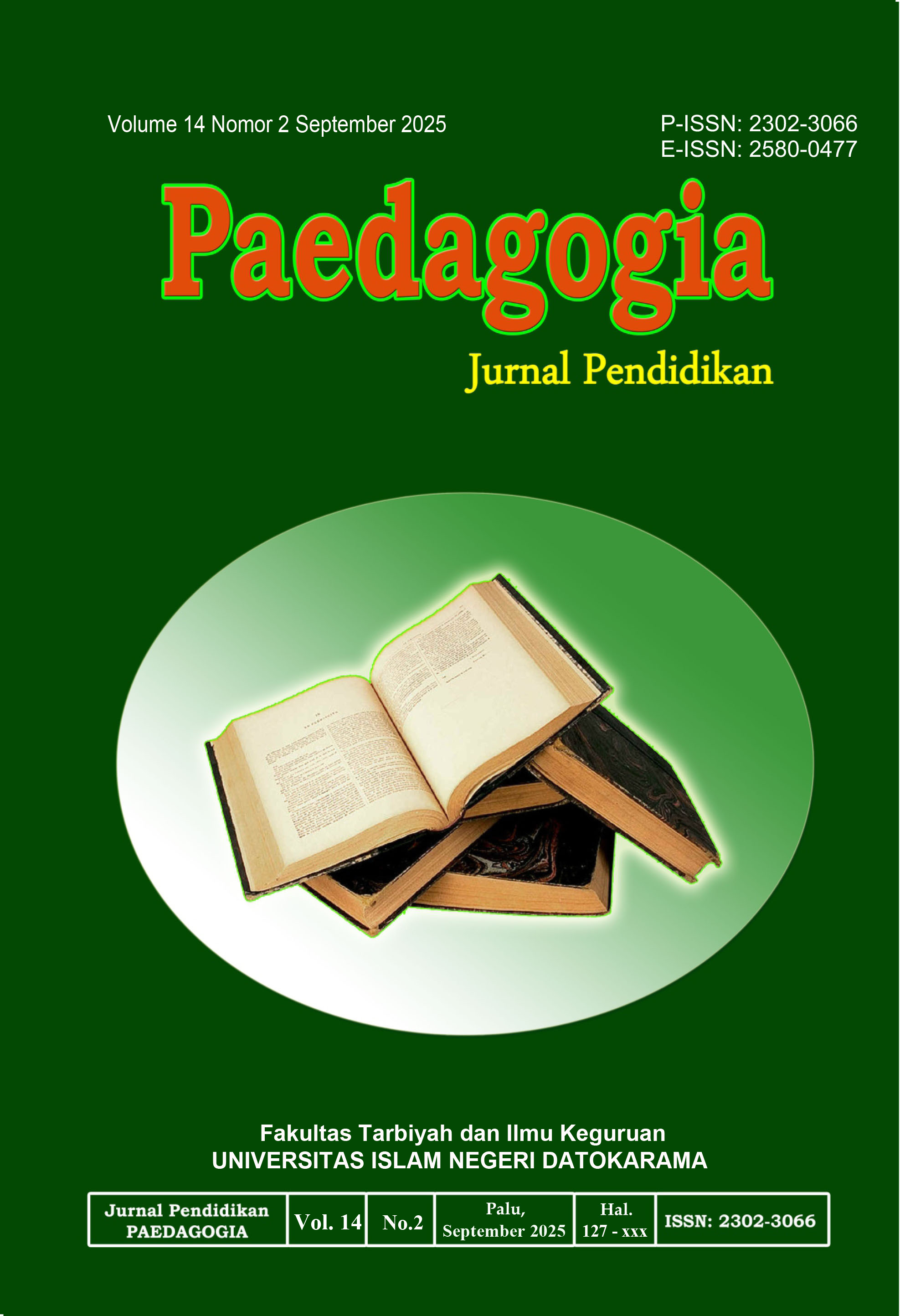




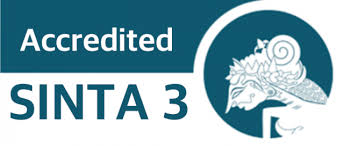
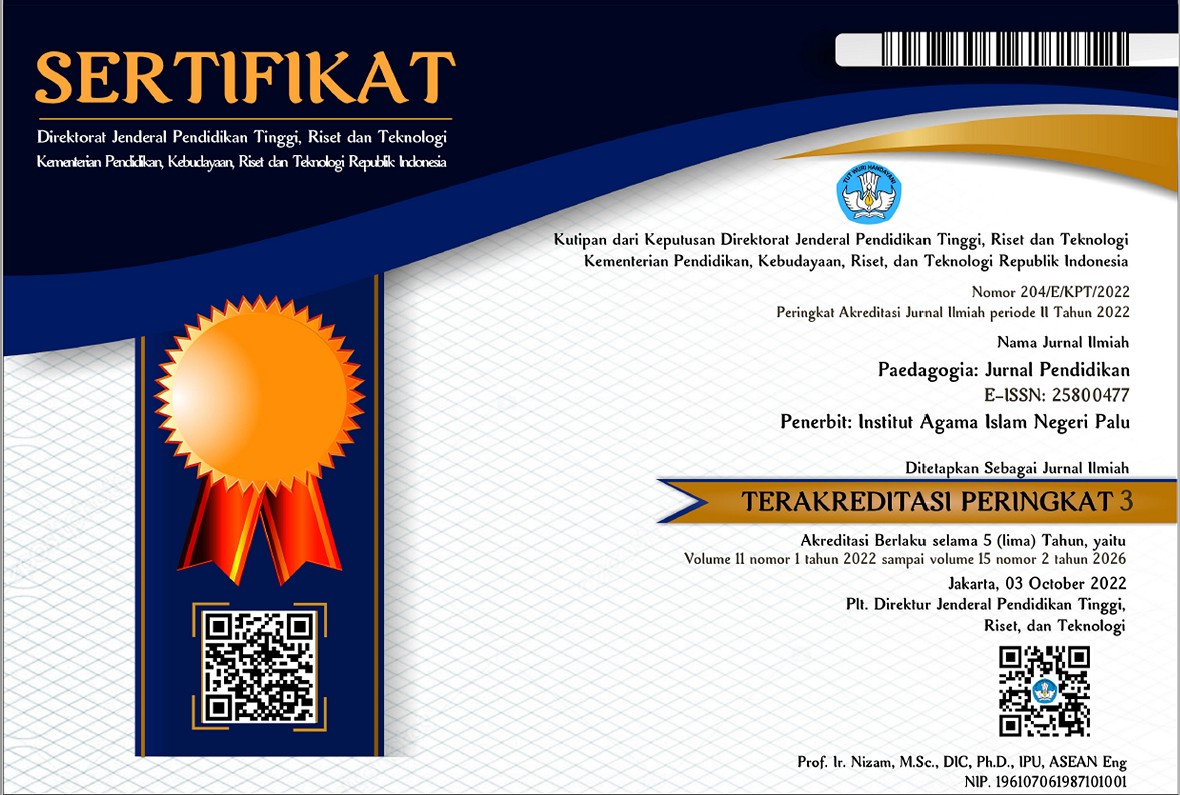
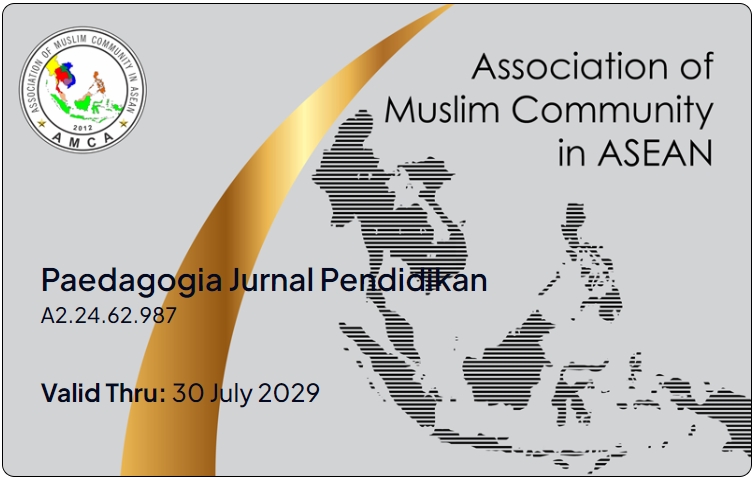




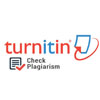
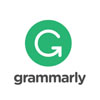
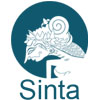








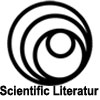
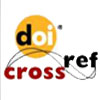
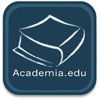






 This work is licensed under a
This work is licensed under a 